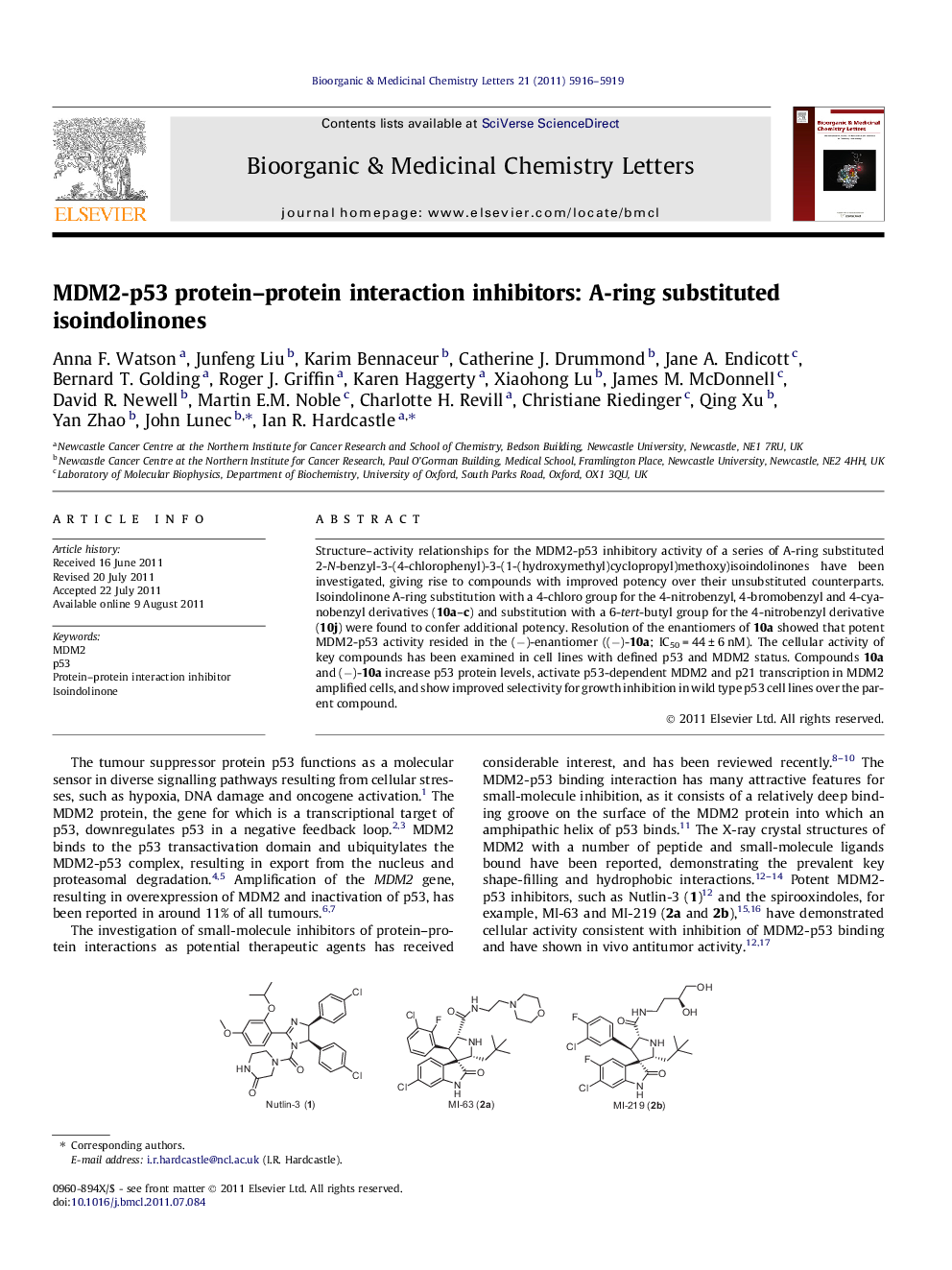| Article ID | Journal | Published Year | Pages | File Type |
|---|---|---|---|---|
| 1372572 | Bioorganic & Medicinal Chemistry Letters | 2011 | 4 Pages |
Structure–activity relationships for the MDM2-p53 inhibitory activity of a series of A-ring substituted 2-N-benzyl-3-(4-chlorophenyl)-3-(1-(hydroxymethyl)cyclopropyl)methoxy)isoindolinones have been investigated, giving rise to compounds with improved potency over their unsubstituted counterparts. Isoindolinone A-ring substitution with a 4-chloro group for the 4-nitrobenzyl, 4-bromobenzyl and 4-cyanobenzyl derivatives (10a–c) and substitution with a 6-tert-butyl group for the 4-nitrobenzyl derivative (10j) were found to confer additional potency. Resolution of the enantiomers of 10a showed that potent MDM2-p53 activity resided in the (−)-enantiomer ((−)-10a; IC50 = 44 ± 6 nM). The cellular activity of key compounds has been examined in cell lines with defined p53 and MDM2 status. Compounds 10a and (−)-10a increase p53 protein levels, activate p53-dependent MDM2 and p21 transcription in MDM2 amplified cells, and show improved selectivity for growth inhibition in wild type p53 cell lines over the parent compound.
Graphical abstractFigure optionsDownload full-size imageDownload as PowerPoint slide
